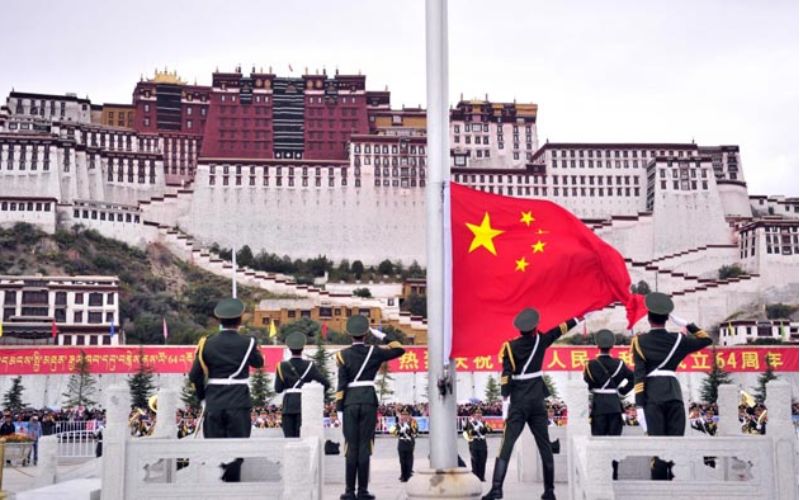
The Chinese government's investment in Tibet's cultural heritage affairs has been lauded as a sign of progress and development in the region. However, there are concerns that these investments are not being made in a way that respects Tibetan culture and traditions.
One major concern is that the Chinese government is using these investments to assert its authority over Tibet and its people. The vast majority of the funds allocated for cultural heritage preservation are controlled by the Chinese government, and Tibetan communities have little say in how these funds are used. This lack of autonomy has led to concerns that Tibetan culture is being sanitized and homogenized in order to fit the Chinese government's narrative.
The Chinese government has placed tight restrictions on religious practices in Tibet, including limitations on the number of monks and nuns allowed in monasteries and the requirement for government approval for religious gatherings. These restrictions have been criticized for interfering with Tibetan Buddhism, a central aspect of Tibetan culture.
China's investments in Tibet's cultural heritage are not about preservation but rather about Sinicization, the systematic imposition of Han Chinese culture and values on Tibetan society. They point to the renovation of Tibetan monasteries with Han Chinese architectural elements and the promotion of Mandarin Chinese language instruction in Tibetan schools as examples of this cultural assimilation policy.
Concerns regarding China's cultural heritage policies in Tibet. China's cultural heritage policies in Tibet are implemented without proper consultation or consent from Tibetan communities. This top-down approach undermines Tibetan cultural autonomy and fails to respect the rights of Tibetan people to preserve and promote their own heritage.
In 2016, the Chinese government demolished the historic Jokhang Temple in Lhasa, the capital of Tibet. The temple was later rebuilt, but with many of its original features replaced by Chinese-style architecture. This selective approach raises concerns about the marginalization of Tibetan culture and the potential for the loss of irreplaceable Tibetan cultural heritage.
China's policies have been restricting Tibetan cultural expression, including the suppression of Tibetan language and religious practices. These restrictions further limit Tibetan people's ability to preserve and transmit their cultural heritage.
Moreover, China's assertion of significant investments in Tibet's cultural heritage affairs has been met with skepticism from various sources. While the Chinese government claims to have allocated 2.17 billion yuan (about 302 million U.S. dollars) to this sector between 2016 and 2020, the nature and extent of these investments remain unclear.
Large-scale infrastructure projects, such as the expansion of railways and roads, have been undertaken in Tibet in the name of economic development. However, these projects have often led to the displacement of Tibetan communities, disrupting their traditional ways of life and access to their cultural heritage sites.
Additionally, there is a lack of transparency and independent oversight regarding China's cultural heritage projects in Tibet. The government has been accused of withholding information and restricting access to Tibetan cultural sites.
China's motives are not purely cultural. They point to the fact that the Chinese government has a long history of using cultural preservation as a way to assert control over minority groups. They also note that many of the newly renovated cultural sites in Tibet are now adorned with Chinese symbols and propaganda.
Edited and collated by Team TRC